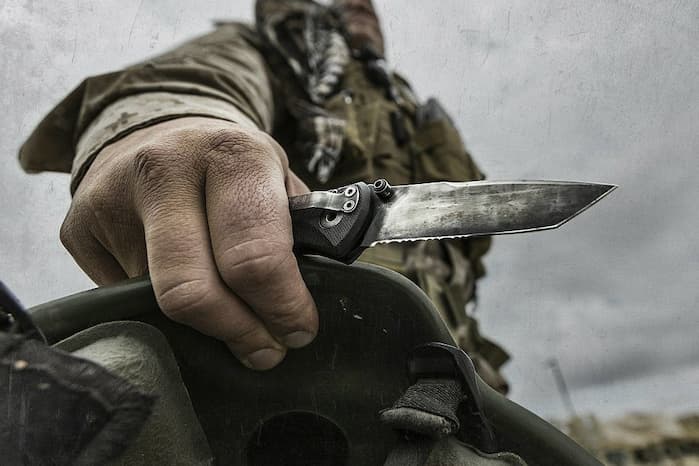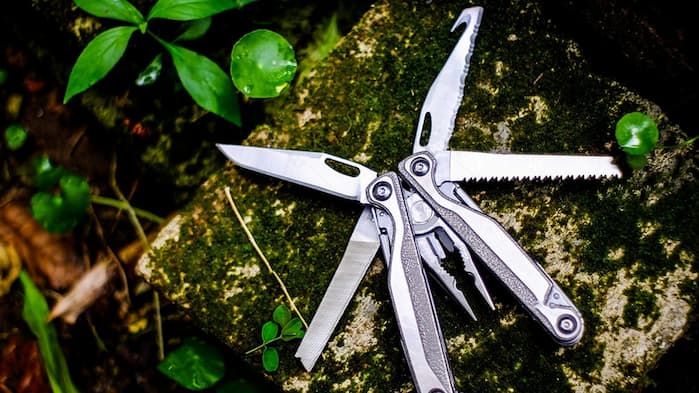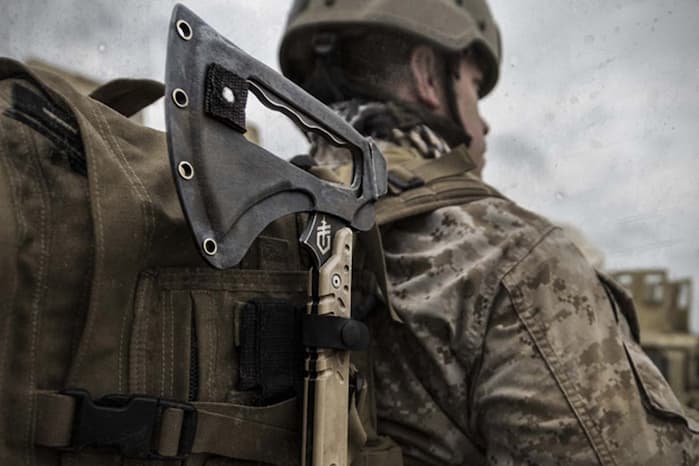Tactical gear was once the reserve of military and law enforcement personnel. But things have changed. Standard issue military garments of old are now everyday pieces of clothing that we take for granted. The T-shirt, chinos, cargo pants, beanies, turtlenecks and field jackets are just some of the items first issued for military use. And the same can be said of standard-issue army tools. The only difference is that these today feature a modern twist, and more uses than you can think of.
A variety of army tools for sale have been on store shelves for quite some time. Here knives and the more recent multi-tools are the obvious choices, but you’ll also find demand for axes and saws. They’re the kind of tools that you’d use when hiking, hunting, fishing, camping and rescue missions, or for odd jobs in countless situations.
Knives

The variety of knives is astounding. Almost all are good for self-defence, but different blade styles, materials and handles will make one knife better for your intended task than another. Then there’s size and weight to think of and practicality in daily use.
For everyday carry consider smaller, lightweight, foldable knives that are pocketable, but are also quick to engage and hold their blade. For more demanding outdoor use consider a survival knife with larger and stronger fixed blades. Most of these also deploy serrated top blades for cutting into a range of materials and with an included steel pommel for crushing rocks, bones or glass. Hunting knives come in different shapes, sizes and blades, depending on the type of cut needed. Army and police knives feature medium to large straight blades, either folding or fixed, and are treated for better strength and a variety of different environments. They tend to do well with grip in the handles, and usually are serrated. The general-purpose tactical utility knife, and its offshoot the camp knife, are jacks of all trades, that have decent blade strength, and are often compact and foldable and with enough features for a variety of purposes.
When shopping for tactical or army knives take into account the types of blade edges. Plain blades are more geared towards deep, precision cuts, whereas combination edges with serrations are more for tearing, piercing and slicing. In addition, blade styles like drop-point or clip point (among dozens of others) produce different results. The materials of the blade will determine toughness, whether the blade stays sharp after frequent use, and how it holds up against the elements. Carbon steel is a more costly option, good for sharpness if a little brittle, and stainless steel is a more affordable choice with generally rounded out properties.
Also consider blade size, whether you need a folding knife due to limited space, locking options for better safety, and the quality, grip and ergonomics of the handle.
Multi-tools

Multitools evolved from the humble offerings of Swiss Army knives from Victorinox and Wenger, into the fully-fledged contemporary Leatherman iterations with dozens of tools. These are invaluable and versatile tools that are easy to carry, and with all that you get, relatively lightweight. Size matters here, and there are smaller yet purposeful keyring multi-tools, larger pocket variants and full-sized multi-tools packed with everything you may ever need.
Tools vary among the different sized versions, but most will include a pair of pliers, wire cutters, a plain edge or serrated knife, can and bottle openers, screwdrivers with different heads, scissors, a full-sized saw, ruler and a file. So, you’ve got the basics covered for a range of different tasks without carrying a whole toolbox. Specialised multi-tools like those used in bike repair or gun maintenance have several tools of the same type necessary for the task. For instance, Torx, Philips, hex and flathead screwdrivers and bits are included in bike repair multi-tools.
As with knives, materials matter here too. Look for multi-tools in high-grade stainless steel for good strength, durability and resistance from corrosion and everyday wear and tear. If you’ve already got a decent knife, then you might want to skip multi-tools with an included knife, and save some weight and cash in the process.
Axes and Saws

Hatchets and axes complement your knife in cutting, piercing and crushing tasks where a lot more force is needed. These army tools for sale can easily cut through dense shrubs, prepare firewood, pry open doors, pierce body armour, and smash glass or metal. Axes vary in size, with smaller hatchets being more portable and considerably lighter, yet don’t lose out on strength and blade sharpness as compared to full-sized felling axes.
Axe heads in popular Tomahawk axes can be of different designs. Single head axes with a larger cutting edge are good in chopping down branches or trees, but they’re not as versatile as axes with double heads, or those with head and spike combos. You’ll also see flat head edges used in pounding and hammering.
Handle shapes and lengths determine whether the axe is good for close-quarter combat, as a general-purpose camp tool, or as a lumberjack’s best mate. The longer the handle the more force garnered in the cutting edge, but at the expense of overall weight.
If you’re often working with wood, besides an axe you’ll need a decent saw. Those included in multi-tools may not be up to the task, so a separate saw with a larger blade in high-grade steel is the way to go. For better cutting performance also look for a comfortable and grippy handle. If this takes up too much space (even when folded), consider lightweight and portable hand chainsaws, with sharp chain blades set between handles. Both are inexpensive yet indispensable tools, especially for frequent campers.












